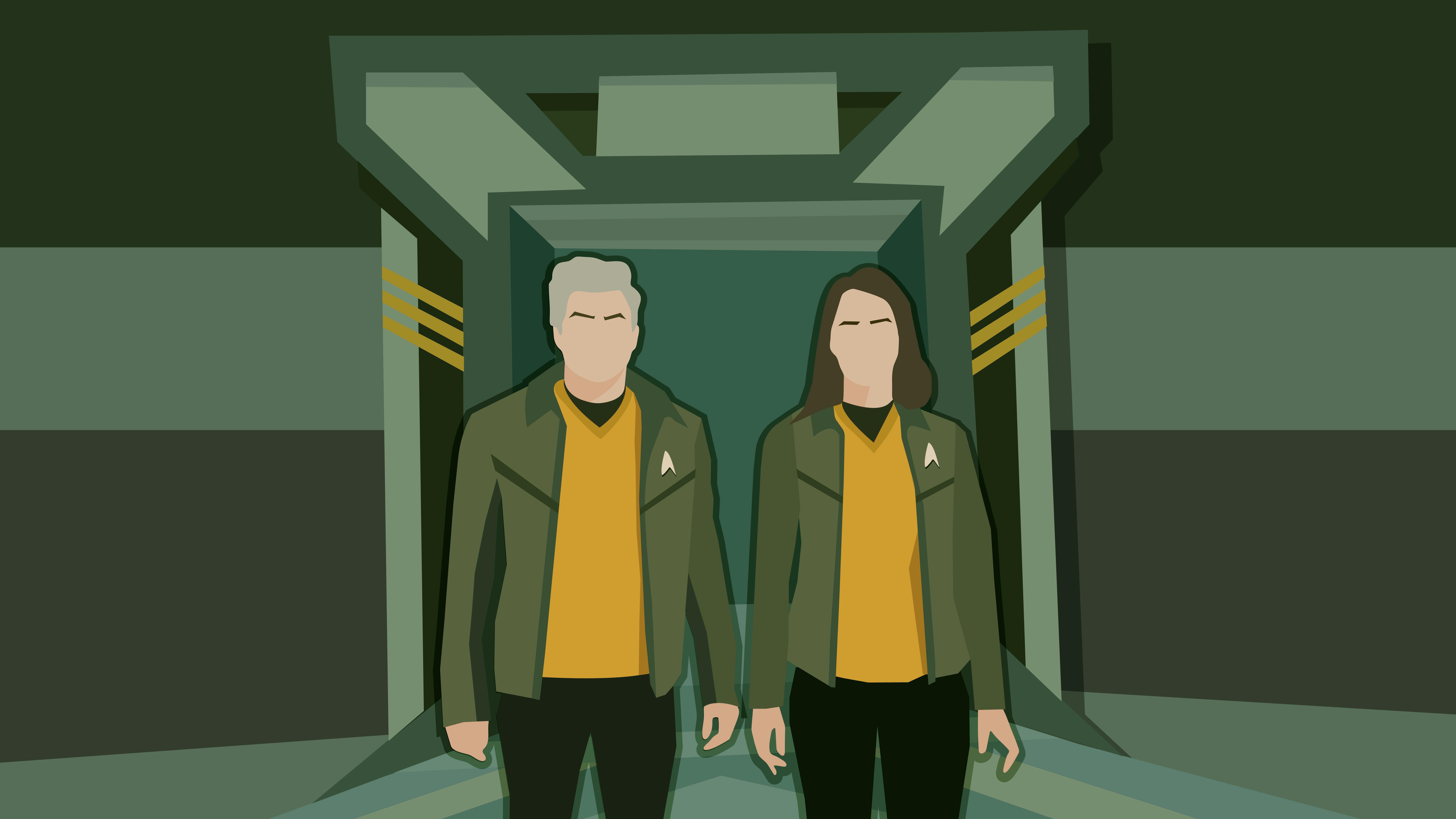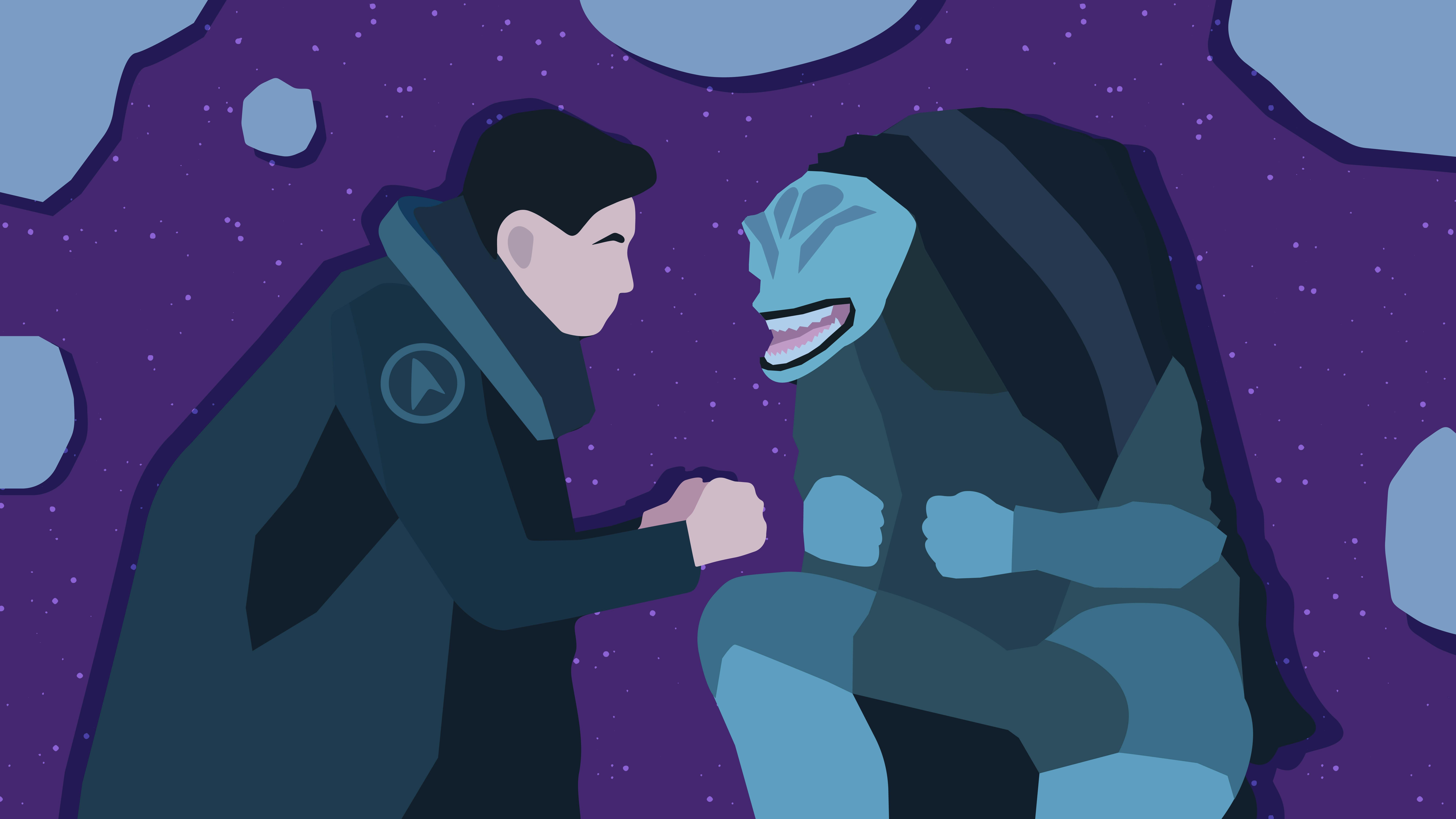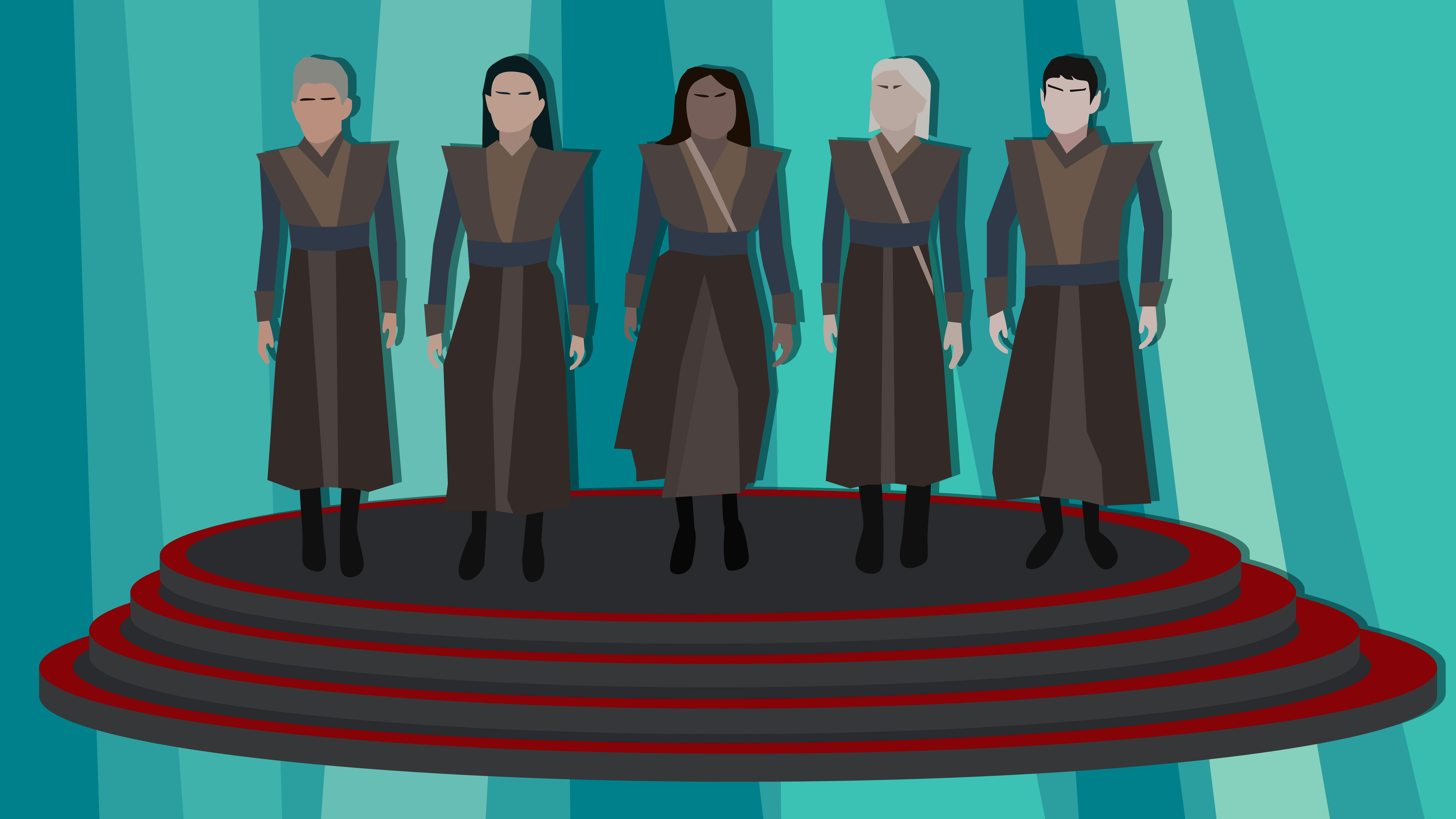Published Nov 16, 2023
Enterprise’s Ambitious Arcs
Revisit the birth of the Federation with these classic Star Trek: Enterprise storylines.

StarTrek.com
From ' “” duology to the lengthy struggle against the Dominion as depicted in , the Star Trek franchise has never been a stranger to epic, multi-episode story arcs. and have even been organized into season-long narratives, where each year’s adventures are dedicated to pursuing a specific plot.
However, no other Trek series has attempted what accomplished in its popular fourth season — a year’s worth of episodes almost entirely divided into mini-arcs consisting of two- and three-part storylines. These installments served as exciting entries in the NX-01 Enterprise’s journey while simultaneously connecting the show with other elements of Star Trek lore.
Let’s look back on the intriguing escapades chronicled in its final season.
1. The Temporal Cold War ("" and "")
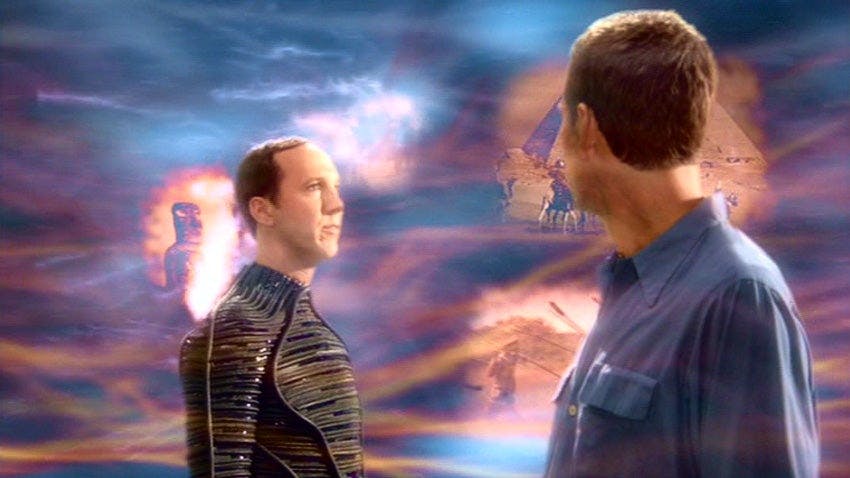
"Storm Front, Part II"
StarTrek.com
Fresh off of a yearlong search for the Xindi superweapon, Captain Archer and his crew found themselves transported back in time to a distorted version of Earth’s Second World War by the 31st Century temporal agent Daniels. Hoping to stop a cadre of 29th Century operatives from manipulating the timeline, Daniels once again enlisted Enterprise to intervene in the Temporal Cold War. Unbeknownst to anyone, the Suliban Silik stowed away on the mission and assisted Archer in foiling the plot spearheaded by an alien known as Vosk. The successful resolution prompted Daniels to send Enterprise to its proper time period.
This duology acted as the conclusion to Archer’s dealings with both temporal agents and the Suliban, two groups who the captain encountered on a fairly regular basis during the early phase of Enterprise’s travels. According to Daniels, Vosk’s defeat helped bring about the end of the Temporal Cold War, a conflict that tied directly into Discovery’s third season. Once Michael Burnham arrived in the 32nd Century, she learned that the war resulted in a ban on time travel. The disarray caused by the numerous temporal factions also distracted the Federation in the years leading up to The Burn.
2. The Augment Crisis ("," "Cold Station 12," and "The Augments")
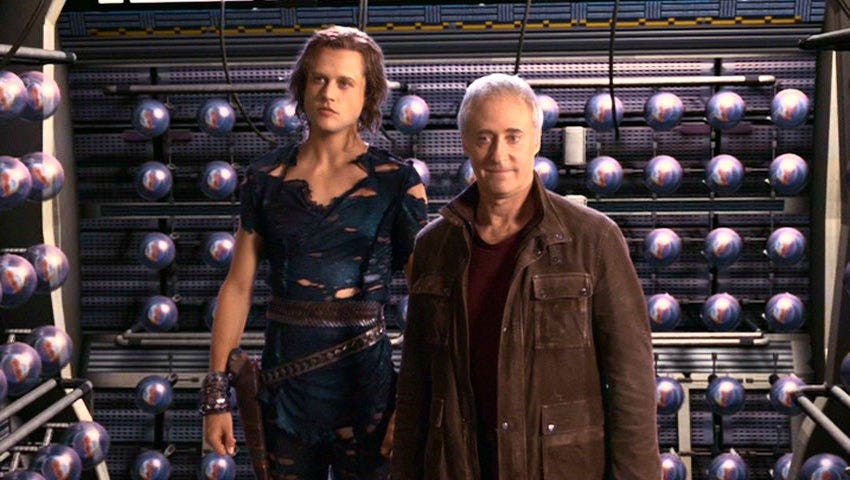
"Cold Station 12"
StarTrek.com
After genetically-enhanced humans attacked a Klingon Bird-of-Prey, Archer recruited their adoptive father, Arik Soong, to accompany Enterprise on an excursion to capture the Augments and prevent a war between the Federation and the Empire. Soong initially sympathized with his children, but his son Malik’s grandiose ambitions ultimately led the scientist to realize that the Augments were too dangerous to roam the galaxy. Enterprise narrowly managed to intervene before Malik released a biological weapon over a Klingon colony, and the remaining Augments were presumed to have perished along with their vessel.
This trilogy supplied a wealth of background information about the Augments and the Eugenics Wars, subjects that were initially touched upon as Kirk battled Khan Noonien Singh in The Original Series episode “” and . Links to The Next Generation-era also abounded, as Arik Soong was an ancestor of Data’s creator Noonian Soong. Upon returning to prison at the end of the arc, Arik mentioned that he intended to shift his focus to cybernetics and artificial lifeforms. While Starfleet temporarily averted a war with the Klingons, a conflict between the two powers ensued a century later during Discovery’s first season.
3. The Vulcan Reformation ("The Forge," "Awakening," and "Kir’Shara")

"Kir'Shara"
StarTrek.com
A faction known as the Syrannites received blame for a deadly bombing at Earth’s embassy on Vulcan, so Archer and T’Pol set out to locate a potential suspect named T’Pau. The two encountered Syrran himself, who transferred Surak’s katra to Archer on his deathbed. At the same time, Vulcan Administrator V’Las raised the stakes by firing on Enterprise and accusing the Andorians of planning an invasion. Archer halted the hostilities when he located the Kir’Shara, which stored Surak’s true teachings, and smuggled the artifact to the High Command. Soon afterward, V’Las held a secret meeting with a Romulan operative to discuss reunification.
First introduced in The Original Series episode “,” T’Pau appeared as her younger self in this arc, while Syrran’s interrogation of Archer featured questions originally heard in . The dissolution of the High Command and reformation of Vulcan society opened the door for improved Earth-Vulcan relations and paved the way for the Coalition of Planets. While V’Las’s discussion about reunification implied a Romulan takeover of Vulcan, the concept nevertheless suggested a connection to Ambassador Spock’s desire for a diplomatic reunion in The Next Generation two-parter “.” Discovery’s “” established that Spock’s peaceful efforts prevailed centuries after his death.
4. The Federation's Preamble ("Babel One," "United," and "The Aenar")
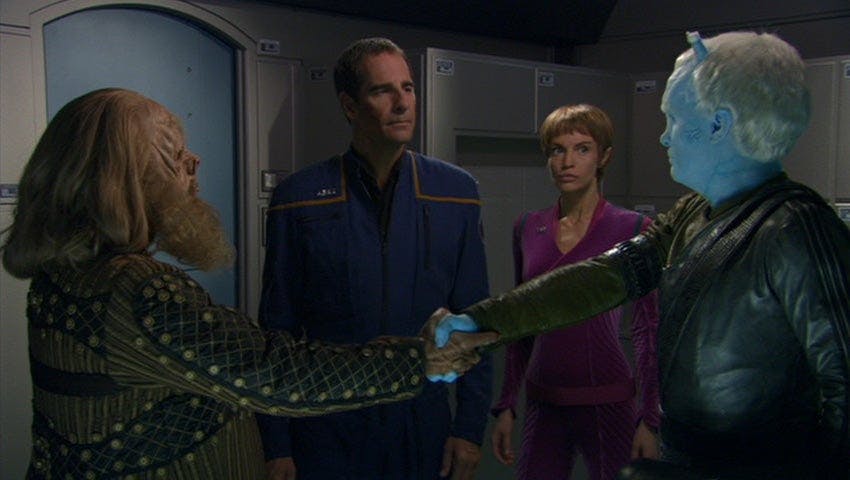
"United"
StarTrek.com
A starship of unknown origin utilized holographic technology to hide its true identity so that it could destabilize diplomatic relations between humans, Andorians, Tellarites, Vulcans, and Rigelians. Unbeknownst to those species, the craft was under the remote command of Romulan Admiral Valdore. With Archer’s leadership, the Andorians, Tellarites, and Vulcans joined Enterprise in a hunt for the elusive vessel. Having lifted the veil on the plot, Archer and Shran learned that a captured Aenar was controlling the vessel and worked alongside the pilot’s sister to convince him to destroy the experimental Romulan weapons.
As its title suggested, the first entry in this trilogy began with Enterprise transporting a Tellarite delegation to Babel, the same location that Captain Kirk escorted Federation dignitaries to in The Original Series episode “.”
Additionally, the cooperation Archer organized between the local species acted as another cornerstone for the Coalition that would be founded in the coming years, particularly in light of the alliance initiated by the Andorians and Tellarites. Although Archer and his associates never definitively proved the Romulans were behind the attacks, Romulus’ interest in interfering with Earth would later resurface during the war that Spock described in “.”
5. The Klingon Contagion (“” and “”)

"Divergence"
StarTrek.com
In order to halt a devastating virus ravaging the Empire, the Klingons abducted Doctor Phlox so that he could work to find a solution. Outraged when he learned the virus had been caused by Klingon experimentation with DNA harvested from Augment embryos, Phlox refused to partake in any efforts to create Klingon Augments. Luckily, Phlox’s Klingon counterpart Antaak devised a method of halting the virus without amplifying the subjects’ intelligence or strength, a process which was accelerated when Archer allowed Phlox to use him to produce antibodies at an expedited rate.
This two-parter is primarily remembered for illustrating why Klingons appeared without cranial ridges in The Original Series. Antaak mentioned a potential for reconstructive surgery, which would also explain why Kor, Kang, and Koloth appeared with intact ridges on Deep Space Nine. The episodes cleverly incorporated information from the Augment arc that occurred earlier in Enterprise’s fourth season.
While not specifically named, Malcolm Reed contacted a former employer who was clearly an agent of Section 31, an organization that would be further explored in DS9 and Discovery.
6. The Mirror Universe ("" and "")

"In A Mirror, Darkly"
StarTrek.com
Set entirely in the Mirror Universe, this duology held the unique distinction of being a prequel to The Original Series episode “” and a sequel to “.”
The two entries cataloged the Terran Empire’s fight against rebels a century before Kirk made his trip to this alternate dimension while also following up on the disappearance of the U.S.S. Defiant that took place in Tholian space. The alien uprisings foreshadowed the Terran Empire’s demise that was predicted by Mirror Spock and showcased in DS9’s own ventures into the Mirror Universe. These events also connected to Emperor Georgiou’s rule in Discovery, as rebels plagued the Empire in her era, as well.
7. The Coalition Confrontation ("" and "")
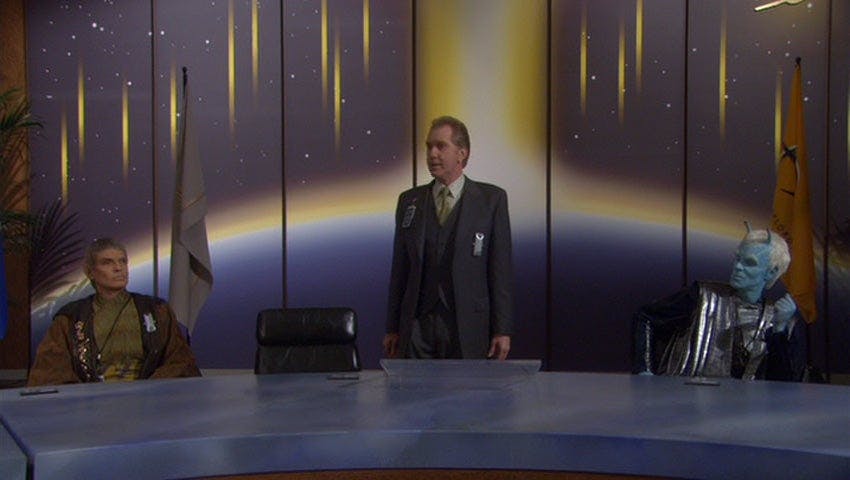
"Demons"
StarTrek.com
With a conference taking place to discuss the creation of a Coalition of Planets, John Frederick Paxton sought to foil the peaceful proceedings and spread the xenophobic message he shared with Colonel Green, a version of whom was initially seen in TOS’ “.”
Paxton harvested Charles Tucker and T’Pol’s DNA to clone a Human-Vulcan child as a means to stir up anti-alien sentiments, but Archer and his crew defeated Paxton and succeeded in keeping the diplomatic meetings on track. The conference formed the seeds of a Coalition, which eventually gave birth to a Federation that endured into the 32nd Century. Although Tucker and T’Pol’s daughter perished, Phlox discovered that it was due to a cloning error rather than DNA incompatibility. This information explained the future presence of Human-Vulcan children, including our beloved Mister Spock.

